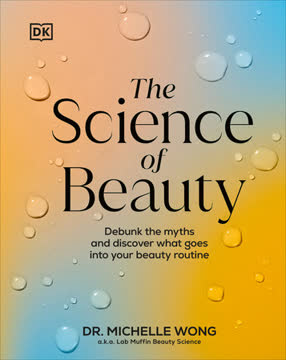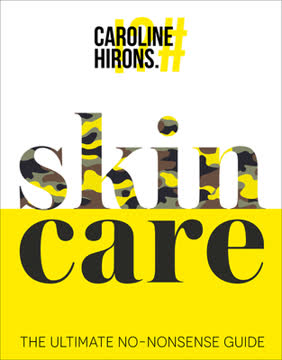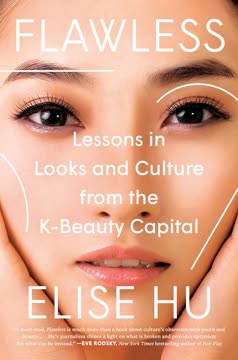Key Takeaways
1. Beauty's Complex Nature: Subjectivity, Evolution, and Industry Influence
Subjective, valuable, and almost impossible to define, the concept of beauty is an inescapable part of how we experience the world—and one another.
Beauty is multifaceted. While often considered "in the eye of the beholder," research shows universal aesthetic preferences like youth, symmetry, and happy features, potentially rooted in evolutionary instincts signaling health and fertility. Conversely, cultural norms, media, and individual tastes heavily influence what is deemed beautiful, leading to diverse and evolving standards.
Industry's dual role. The beauty industry, a massive business, offers products for hygiene, self-expression, confidence, and even financial advantage (attractive people often earn more). However, it also perpetuates harmful, often Eurocentric, beauty ideals through airbrushed ads and marketing that exploits insecurities, inventing problems for new products to solve.
Navigating expectations. It's crucial to remember that personal value isn't dictated by appearance. This book aims to equip readers with scientific knowledge to discern fact from fiction in marketing claims, empowering them to choose products that genuinely deliver desired results without succumbing to unrealistic ideals.
2. Demystifying Product Safety: Regulation, Ingredients, and Misinformation
It’s a common misconception that beauty products are largely unregulated and that many mass market products are harmful to our health.
Rigorous safety standards. Contrary to popular belief, beauty products in well-regulated markets like the US and EU are subject to stringent safety regulations. Companies are legally responsible for demonstrating product safety, and independent expert bodies assess ingredient safety using toxicology principles, similar to food and medications.
Dose makes the poison. Ingredient safety is determined by both hazard and exposure. Minute traces of substances, like heavy metals, are usually not a concern because the amount is well below the threshold for harm. Highly hazardous ingredients, like botulinum toxin (Botox), can be safely used in tiny, controlled doses.
- Risk = Hazard × Exposure
- Hazard: Potential harms (irritation, cancer, endocrine disruption) assessed via in vitro, animal, human, and epidemiological studies.
- Exposure: How much, how often, and where an ingredient is used, including total exposure from multiple sources.
Debunking myths. Many "free from" lists in marketing exploit fears around ingredients like parabens, phthalates, and "fragrance." Parabens, for instance, are safe, widely used preservatives with estrogenic activity thousands of times weaker than natural estrogen. Sensationalist media often drives ingredient removal, leading to "regrettable substitutions" with less-studied alternatives that may pose greater risks.
3. Natural vs. Synthetic: Origin Doesn't Dictate Safety or Efficacy
The bottom line: an ingredient’s origin doesn’t say much about its safety or effectiveness.
"Natural" is undefined. The term "natural" lacks a universal definition, making marketing claims ambiguous. All ingredients undergo processing to be safe for cosmetic use, blurring the line between natural and synthetic. Synthetically produced versions of natural substances are chemically identical and have the same impact on the body.
Advantages of synthetic. Many ingredients originally from nature are now synthesized for cosmetic use, offering several benefits:
- Reduced strain on natural resources.
- Lower cost of production.
- More predictable composition and properties, including fewer contaminants.
- Customization to improve specific properties.
Safety and efficacy. Natural substances are not inherently safer; historically, many dangerous contaminants (lead, asbestos, mold) were natural. Natural fragrance materials often contain common allergens, which can be avoided in synthetic blends. Similarly, natural ingredients aren't automatically more effective; their benefits for humans are often coincidental, whereas synthetic molecules can be precisely designed for desired effects.
4. The Core Skincare Trinity: Cleanser, Moisturizer, and Sunscreen
Skin experts from all fields largely agree that most people should be using cleanser, moisturizer, and sunscreen, regardless of gender or skin type.
Essential skin support. While skin is designed to protect itself, modern environments, hormones, and habits disrupt its function. Skincare products compensate by protecting against environmental insults, replenishing components, and treating disorders. Cleanser, moisturizer, and sunscreen form the foundation of any effective routine.
Cleansing and moisturizing. Cleansers remove unwanted substances like pollutants, makeup, and excess sebum, preventing clogged pores and infections. Gentle cleansers with multiple surfactants, polymers, and moisturizing ingredients are best for all skin types. Moisturizers add water and oil to the stratum corneum, improving barrier function, reducing flaking, and enhancing radiance.
- Moisturizer Categories:
- Occlusives: Form a water-repellent layer (e.g., petroleum jelly, mineral oil).
- Humectants: Bind to water (e.g., glycerin, hyaluronic acid).
- Emollients: Smooth and soften skin (e.g., plant oils, ceramides).
Sunscreen's vital role. Sunscreen reduces UV exposure, the primary external cause of skin damage, premature aging, uneven pigmentation, and skin cancer. A broad-spectrum SPF 30+ sunscreen is recommended daily, even indoors near windows, as UVA penetrates glass. Layering sunscreen with other protective measures like clothing and shade offers the most comprehensive defense.
5. Targeting Skin Concerns: From Aging to Acne with Science-Backed Solutions
Acne is an extremely common skin condition that affects around 80% of people at some point, and it’s one of the main reasons people use skincare products.
Understanding aging skin. Wrinkles are an inevitable part of aging, caused by decreasing collagen, elastin, and disorganized dermal structure, exacerbated by sun exposure and environmental stress. Skin turnover slows, and water retention decreases, making the surface rougher.
- Prevention/Reduction:
- Sun protection: Main preventable cause of premature wrinkling.
- Skincare actives: Retinoids, hydroxy acids, and antioxidants (especially Vitamin C) can thicken the dermis and improve skin turnover.
- Clinical treatments: Chemical peels, microneedling, lasers, Botox, and fillers.
Managing acne effectively. Pimples form from high sebum, clogged pores, Cutibacterium acnes overgrowth, and inflammation, influenced by genetics and hormones. Treatments target these factors:
- Retinoids: Normalize skin turnover (e.g., tretinoin, adapalene).
- Benzoyl peroxide: Kills bacteria, reduces clogs (2.5% as effective as 10% with less irritation).
- Exfoliants: Salicylic acid, azelaic acid reduce clogging and inflammation.
- Hormonal treatments: Oral contraceptives, spironolactone for underlying hormonal factors.
Fading pigmentation and scars. Hyperpigmentation (melasma, PIH, sun spots) results from excess melanin production. Treatments prevent new pigment and remove existing:
- Prevention: Sunscreen (tinted for visible light), treating inflammation.
- Reduction: Tyrosinase inhibitors (hydroquinone, azelaic acid, vitamin C), niacinamide (blocks transfer), retinoids/exfoliants (speed turnover).
- Scars: Silicone gels for raised scars; professional treatments like laser resurfacing, chemical peels, or microneedling for deeper scarring.
6. Hair's Delicate Balance: Structure, Damage, and Smart Conditioning
Hair is dead once it exits the scalp, so it can’t repair itself, and both the cuticle and internal cortex begin to accumulate damage.
Hair's intricate structure. Human hair, as strong as steel by weight, consists of a protective cuticle (overlapping scales with a water-repellent F-layer) wrapped around a central cortex. The cortex, making up 80% of hair mass, contains keratin proteins held by disulfide, ionic, and hydrogen bonds, which determine its shape, strength, and elasticity.
Sources of damage. Hair accumulates damage from daily activities and chemical treatments.
- Mechanical: Friction from brushing, elastic bands, and rubbing chips away cuticle scales, especially when wet (water weakens hydrogen bonds).
- Chemical: Oxidation from bleaching, perming, and dyeing breaks disulfide bonds and removes the F-layer, making hair weaker, rougher, and more porous.
- Heat: Hot tools denature proteins, causing microscopic cracks and color fade.
- UV: Weakens structure, degrades amino acids, and removes the F-layer, leading to roughness and fragility.
Conditioner's crucial role. Conditioners deposit on the hair surface, plugging gaps and smoothing the cuticle. This reduces friction, tangling, and mechanical damage, while also protecting against color fade. Cationic surfactants in conditioners are attracted to the negatively charged damaged areas of hair, forming a silky, protective layer.
- Key takeaway: Longer or chemically treated hair especially benefits from conditioning.
7. Makeup's Transformative Power: Pigments, Formulas, and Application Savvy
Makeup can transform your appearance, which comes in handy for hiding a bad night’s sleep.
The science of color. Makeup pigments are tiny, insoluble particles that selectively absorb light, reflecting the desired color. Organic pigments are brighter but less stable, while inorganic pigments are duller but more stable. Effect pigments, like pearlescent mica, create shimmer through light interference.
Foundation's complex blend. Liquid foundations are typically water-in-silicone emulsions, offering durable, flexible, and evenly colored coverage. They combine pigments, volatile silicones (evaporate to leave a film), film formers, viscosity modifiers, and powders to create a smooth, long-lasting finish. Finding the right shade often requires testing on the face in natural light, as colors can "oxidize" (change as solvents evaporate).
Specialized makeup. Different makeup types are formulated for specific effects:
- Lipstick: Waxes and oils balance hardness and emolliency, while pigments provide color and staining. Film formers improve transfer resistance.
- Mascara: Waxes, powders, and film-forming polymers coat lashes for thickness, length, and curl. Tubing mascaras use acrylate polymers for smudge-proof "tubes."
- Powder makeup: Base powders (talc, silica) dilute pigments, absorb oil, and provide slip. Binders help adherence.
Application matters. Proper application and removal are key. Makeup with SPF is unlikely to provide adequate sun protection due to insufficient application quantity. Sleeping in makeup can increase breakouts and irritation, especially for eyes. Regular cleaning of brushes is essential to prevent microbial contamination and infections.
8. Nail Health & Enhancements: Understanding Structure and Salon Services
Our nails protect our fingers, improve our sense of touch, and help us pick up small objects.
Nail anatomy and strength. Nails are composed of tough keratin proteins, similar to hair. The nail matrix produces nail cells that flatten, die, and harden to form the nail plate. The plate has a hard dorsal layer and a thick intermediate layer with strong keratin fibers, making it resistant to breakage along its length.
- Nail hydration: Ideal water content is 18%; too much makes nails weak and flexible, too little makes them brittle.
- Nail oil: Naturally present, adds flexibility; can be supplemented with nail oils.
Proper nail care. Cutting nails when hydrated (after a shower) reduces cracks, while filing dry nails with a fine-grit file prevents splitting. Buffing should be conservative to avoid thinning. Aggressive cuticle removal risks infection and permanent nail damage; gentle pushing back after soaking is safer.
Long-lasting nail enhancements. Acrylics, gels, and dip powders offer more durable alternatives to traditional polish by polymerizing (curing) monomers after application.
- Acrylics: Powder (polymer beads + initiator) mixed with liquid (monomers + catalyst) cures in minutes.
- Gels: Liquid monomers + oligomers + UV-activated initiator cure under UV light.
- Dip powders: Monomer liquid + colored polymer powder layers cure with water.
- Risks: Allergies to monomers (especially with skin contact or incomplete curing), nail damage from excessive filing or improper removal, heat spikes from UV lamps, and infections from poor hygiene.
9. Beyond the Bottle: Sustainable and Ethical Beauty Choices
The environmental impacts of everyday products are a hot topic. Consumers are increasingly willing to pay a premium for more sustainable products, but it can be difficult to figure out what is and isn’t greenwashing.
Greenwashing challenges. Many "eco-friendly" claims in beauty marketing are misleading, as sustainability is complex and context-dependent. Consumers often prioritize end-of-life factors like recyclability, but other stages of a product's life cycle can have greater impacts.
Rethinking "natural" and "plastic."
- Natural ingredients: Not always better. Farming can have large impacts (deforestation, water pollution). Wild harvesting can endanger species. Synthetic alternatives can reduce strain on resources and offer more predictable properties.
- Plastic packaging: Often not the worst option. Its light weight reduces transportation emissions compared to glass. While glass and aluminum are more recyclable, their production requires more energy, and paper often needs plastic lining, making it harder to recycle.
Life Cycle Assessment (LCA). A holistic LCA quantifies environmental impacts at every stage: raw materials, processing, manufacturing, distribution, consumer use, and disposal. This tool helps identify true impacts and guide sustainable choices, moving beyond superficial claims.
- Consumer use: Can be significant (e.g., energy to heat shower water for shampoo).
Practical sustainability tips.
- Consume less: The most impactful choice is to buy fewer products.
- Ask for evidence: Demand transparency from brands regarding their sustainability claims.
- Recycle thoughtfully: Check local guidelines for accepted materials and sizes.
- Beware carbon offsets: Often problematic and can create complacency.
10. Clinical vs. Cosmetic: When to Seek Professional Interventions
Skincare products and clinical treatments are complementary approaches instead of separate alternatives.
Topical product limitations. Skincare products are applied to the skin's surface, making them most effective for superficial concerns like maintaining barrier function, treating acne, irritation, and infections. They can target deeper issues like texture and pigment, but require consistent, long-term use (6-12 months) for noticeable changes.
Clinical treatment advantages. Professional cosmetic treatments are ideal for deeper skin concerns, underlying muscle and fat, and achieving more substantial or rapid results. They bypass the skin's barrier more effectively.
- Examples:
- Chemical peels: Controlled injury to trigger repair, loosen top layers.
- Dermabrasion/Microdermabrasion: Mechanically remove top skin layers.
- Ultrasound/Radiofrequency: Deliver heat to induce collagen production.
- Laser/IPL: Intense light to selectively destroy skin components (melanin, hemoglobin, water).
- Botox: Paralyzes muscles to soften dynamic wrinkles.
- Fillers: Inject gel-like substances to add volume.
- Microneedling: Tiny needles puncture skin to stimulate collagen and aid product penetration.
Complementary approach. Clinical treatments often provide the initial "reset" or deeper correction, while skincare products are essential for maintaining those results and protecting the skin long-term. For example, a laser treatment for pigmentation might be followed by a consistent skincare routine with tyrosinase inhibitors and sunscreen.
Risks and practitioner choice. Clinical treatments carry higher risks of side effects (e.g., post-inflammatory hyperpigmentation, burns, scarring). Choosing a qualified, experienced practitioner, especially one familiar with diverse skin tones, is crucial for safety and optimal results.
Last updated:
Review Summary
The Science of Beauty receives mixed reviews, with readers appreciating its accessible explanations of beauty science and myth-debunking. Many find it informative and visually appealing, praising the author's expertise. However, some criticize it as too basic for advanced readers or lacking depth. The book is generally recommended for beginners seeking a scientific understanding of skincare, haircare, and cosmetics. Readers value its evidence-based approach and clear explanations, though some wish for more practical advice or in-depth scientific content.
Similar Books
Download PDF
Download EPUB
.epub digital book format is ideal for reading ebooks on phones, tablets, and e-readers.







